Growing cannabis at home? You need to know which plants are male and which are female. This isn’t just helpful. It’s essential for getting quality buds.
After five years of growing organic cannabis and helping hundreds of home growers, I’ve learned something important. Plant sexing confuses most beginners.
The good news? You can identify female plants as early as 4 to 6 weeks from seed.
This guide will teach you everything about cannabis plant sex. You’ll learn why female plants matter. You’ll understand how males affect your harvest. We’ll cover when to choose regular versus feminized seeds.
We’ll discuss the 99% success rate of feminized seeds. You’ll also learn why some growers still prefer the 50/50 gamble of regular seeds.
By the end, you’ll confidently identify plant sex. You’ll make smart decisions for your growth. No more guessing or wasted time on unwanted males.
All information is for legal home cultivation only.
The Science Behind Cannabis Preflowers
Preflowers are tiny early sex indicators that appear at stem junctions, allowing you to identify male or female cannabis plants weeks before full flowering begins.
1. What Are Preflowers?
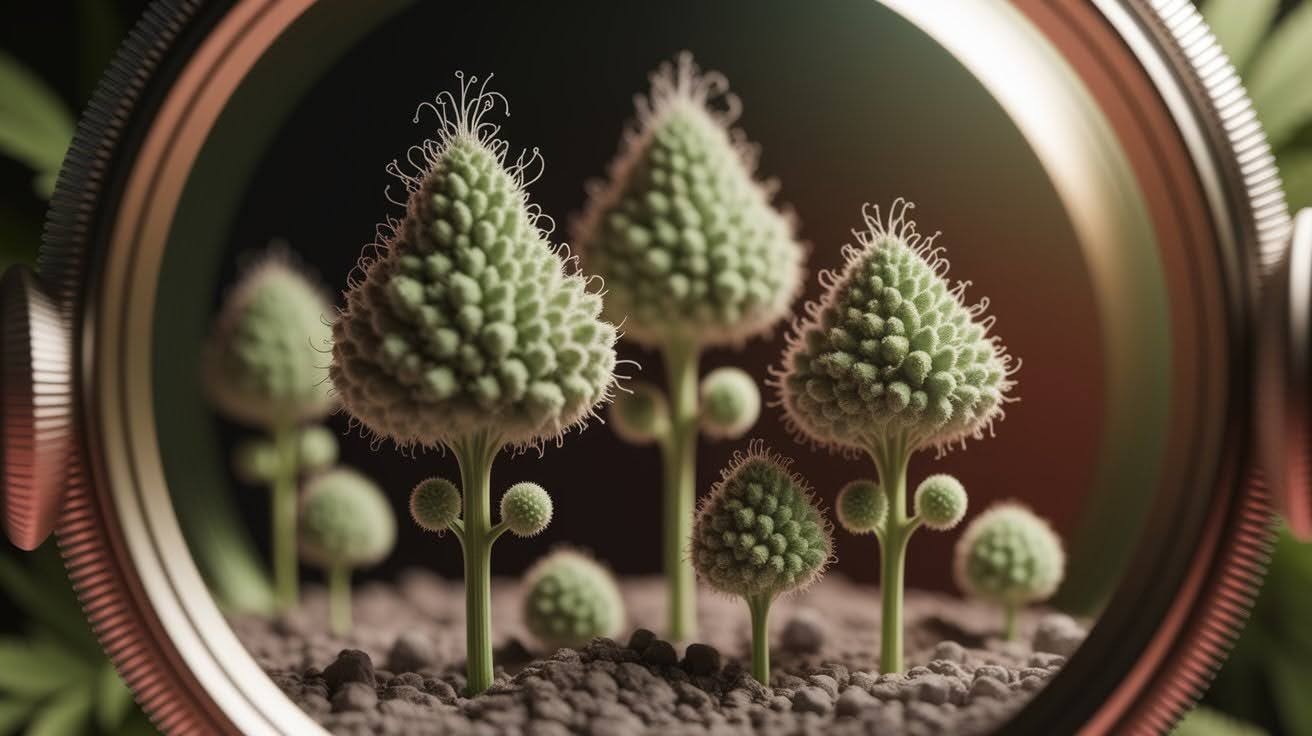
Pre-flowers are tiny versions of adult cannabis flowers. They show up early during the vegetative stage. Think of them as baby flowers that tell you the plant’s sex.
I first learned about preflowers from an experienced grower who caught me waiting too long to sex my plants. “You don’t need to wait for full flowering,” he told me. That advice changed everything.
Here’s what you need to know:
Preflowers appear at specific spots on your plant. Look for the junction where the main stalk meets a fan leaf stem. This connection point is called the petiole.
Why does location matter? These junctions are where your plant shows its first signs of sex. Not on branches. Not on leaves. Right at these connection points.
Pheromones serve as early sex indicators. They’re like nature’s way of giving you a sneak peek. You can spot them weeks before the plant starts flowering.
Most growers miss preflowers because they’re incredibly small at first. I use a jeweler’s loupe to get a better look. The same tool works for checking trichomes later.
Bottom line: Preflowers let you identify plant sex early. This saves time, space, and resources.
2. Timeline for Preflower Development
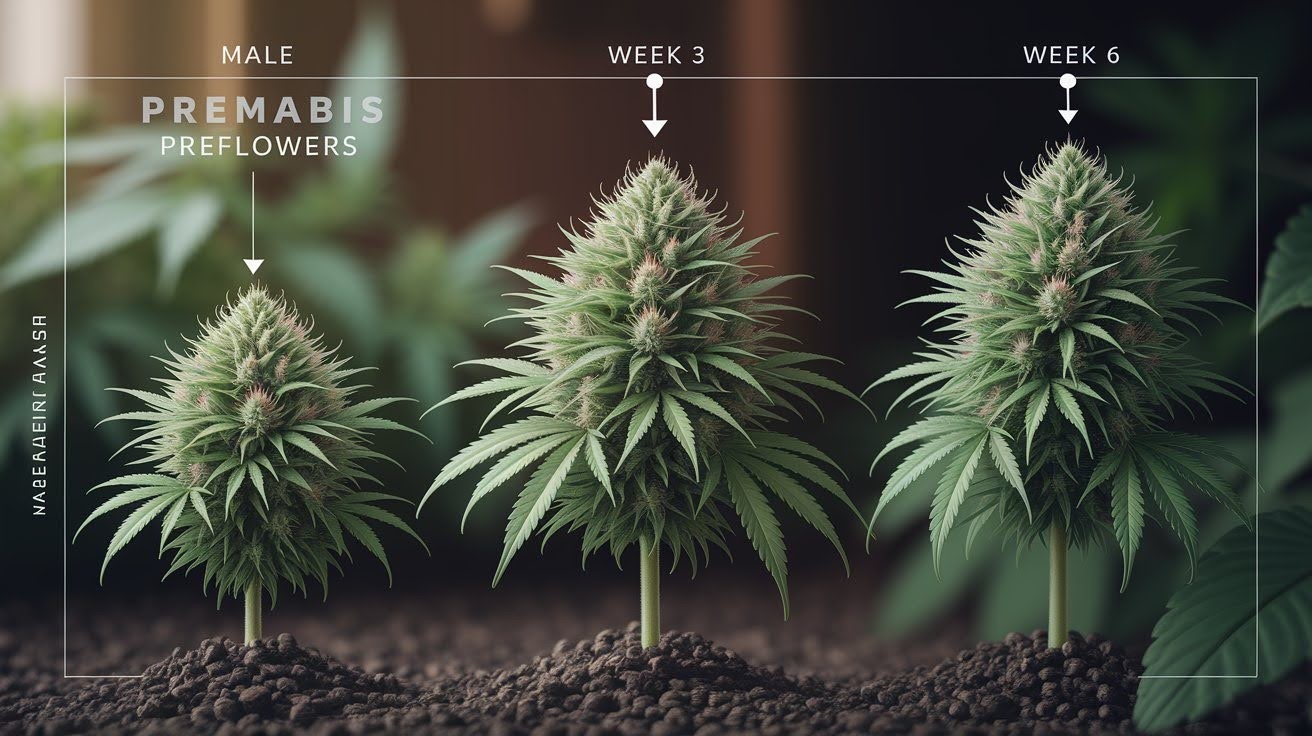
Timing matters when sexing cannabis plants. I’ve tracked hundreds of plants over the years. The patterns are consistent.
Male plants show their cards first. They develop preflowers at 3 to 4 weeks from germination. Females take a bit longer.
Female flowers appear at 4 to 6 weeks. This later timing used to frustrate me as a new grower. Now I know it’s completely normal.
Week 3 brings the first male signs. Most males are identifiable by week 4. Early females begin appearing around week 5.
Why do males show earlier? Think of it like nature’s dating game. Males want their pollen ready when females arrive at the party.
By week 6, you should know what you’re working with. If a plant hasn’t shown sex by then, give it another week. Some strains delay development.
Don’t rush the process. Wait for clear signs.
3. Anatomical Components
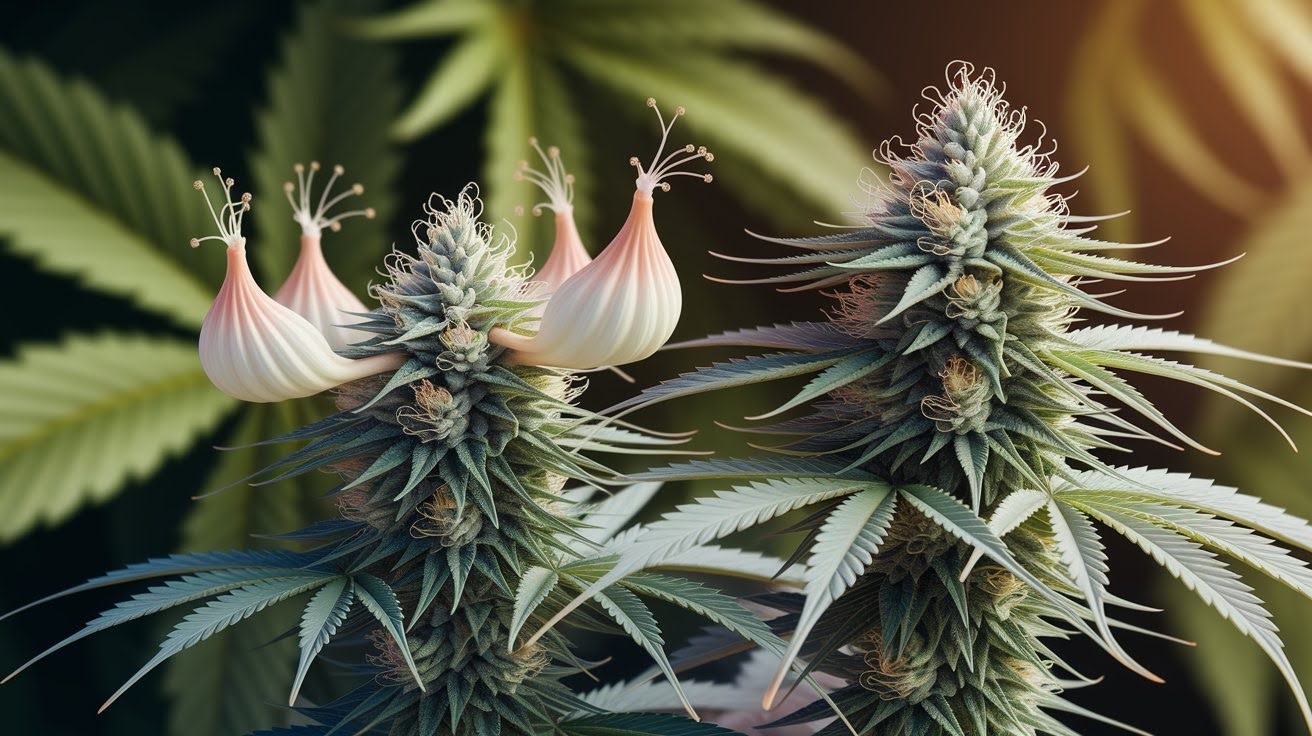
Learning plant anatomy helps you sex cannabis accurately. I made countless mistakes early on because I confused different plant parts.
Stipules are leafy, pointed flaps that grow at stem junctions. They look important, but they’re not flowers. Don’t let them fool you like they fooled me for months.
I remember staring at stipules thinking they were sex organs. Wrong. Stipules appear on both male and female plants. They’re just structural parts.
The calyx is what you’re looking for. This is the actual reproductive structure that determines sex. It sits right behind the stipule at each junction.
Here’s where it gets interesting. Behind the preflowers, you’ll see future auxiliary branches starting to form. These will become the branches that produce buds later.
Think of it this way. The stipule is like a protective cover. The calyx behind it reveals the sex. The developing branch behind that will hold your future harvest.
Focus on the calyx, not the stipule. This simple tip will save you weeks of confusion.
Advanced Detection Methods
Chemical leaf testing uses qPCR technology to identify cannabis plant sex from just a tiny leaf sample as early as 1-3 weeks from germination, eliminating guesswork.
1. Chemical Leaf Testing
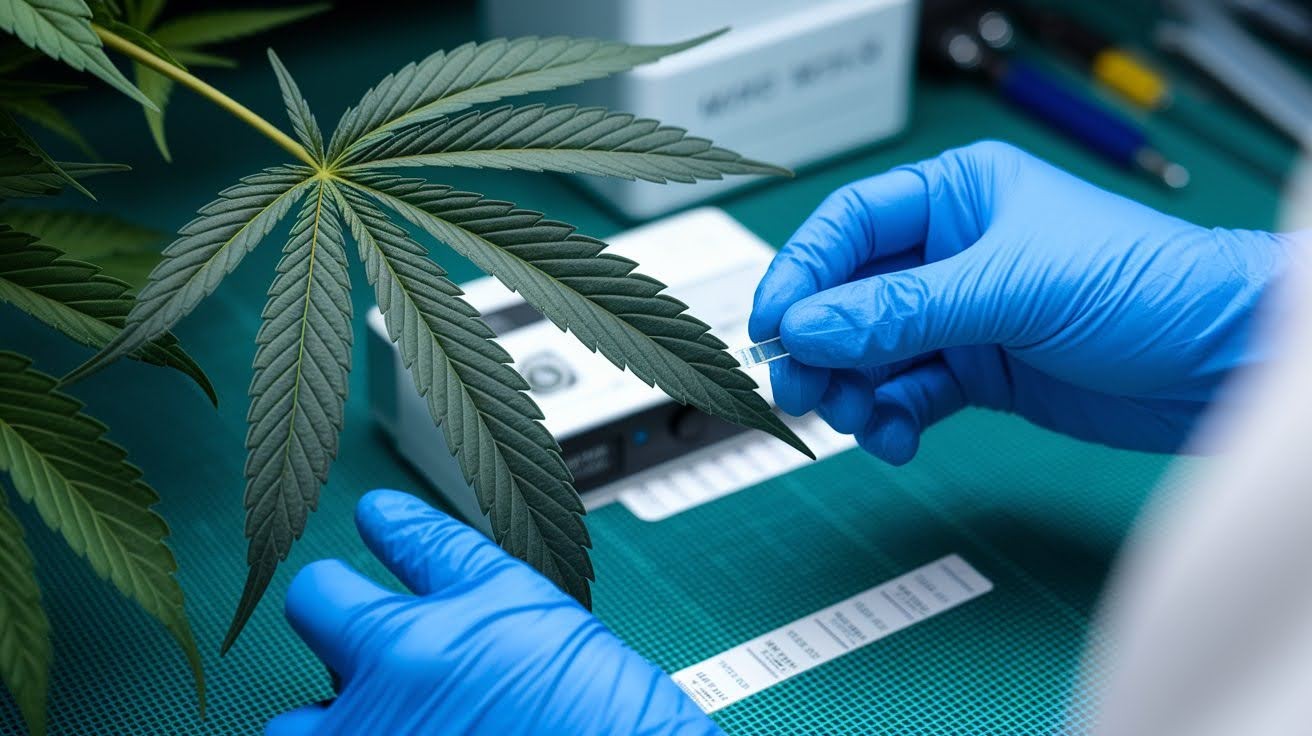
Science has made cannabis sexing much easier. I started using chemical leaf tests three years ago. Game changer.
You can test plants as early as 1 to 3 weeks from germination. That’s weeks before visual identification becomes possible.
The test uses something called qPCR. Don’t worry about the fancy name. It’s a real-time polymerase chain reaction test that finds sex markers in plant DNA.
Here’s the best part. You only need a tiny sample. A single cotyledon leaf works perfectly. Some labs accept just a small punch from any leaf.
I was amazed the first time I tried this. Such a small piece of plant tissue can tell you everything you need to know about sex.
Wait until week 3 for the best results. Testing earlier is possible, but accuracy improves with plant age. The DNA markers become clearer as seedlings develop.
Why use chemical testing? It removes all guesswork. No more studying tiny preflowers with a magnifying glass. No more waiting and wondering.
The cost keeps dropping every year, too.
2. Visual Inspection Tools
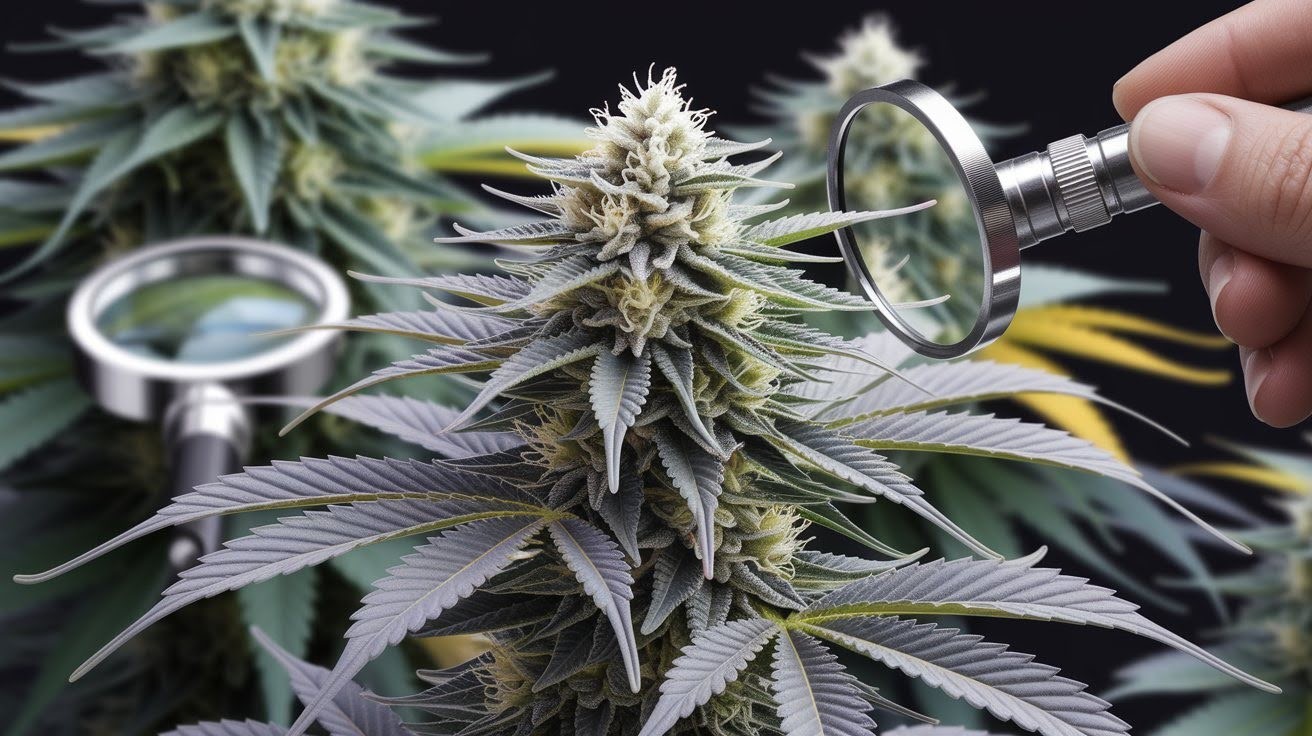
A jeweler’s loupe is your best friend for sexing plants. I bought my first one for $15 online. Best investment I ever made for my growth.
Preflowers are incredibly tiny when they first appear. Your naked eye won’t cut it. You need magnification to see the details that matter.
Here’s what’s cool about jeweler’s loupes. You’ll use the same tool later to check trichomes during harvest. One tool serves two important purposes throughout your growth.
I prefer 30x magnification for preflower identification. 60x works too, but can be harder to steady. Find what feels comfortable in your hands.
Lighting makes all the difference. I learned this the hard way after misidentifying several plants in poor light. Natural sunlight works best for accurate colors and details.
Avoid using your phone’s flashlight. The harsh white light can wash out important visual cues. Soft, indirect lighting shows true plant structures.
Practice using your loupe before you need it. Get comfortable with the focus and positioning. When identification time comes, you’ll be ready.
3. Physical Characteristics of Female Preflowers
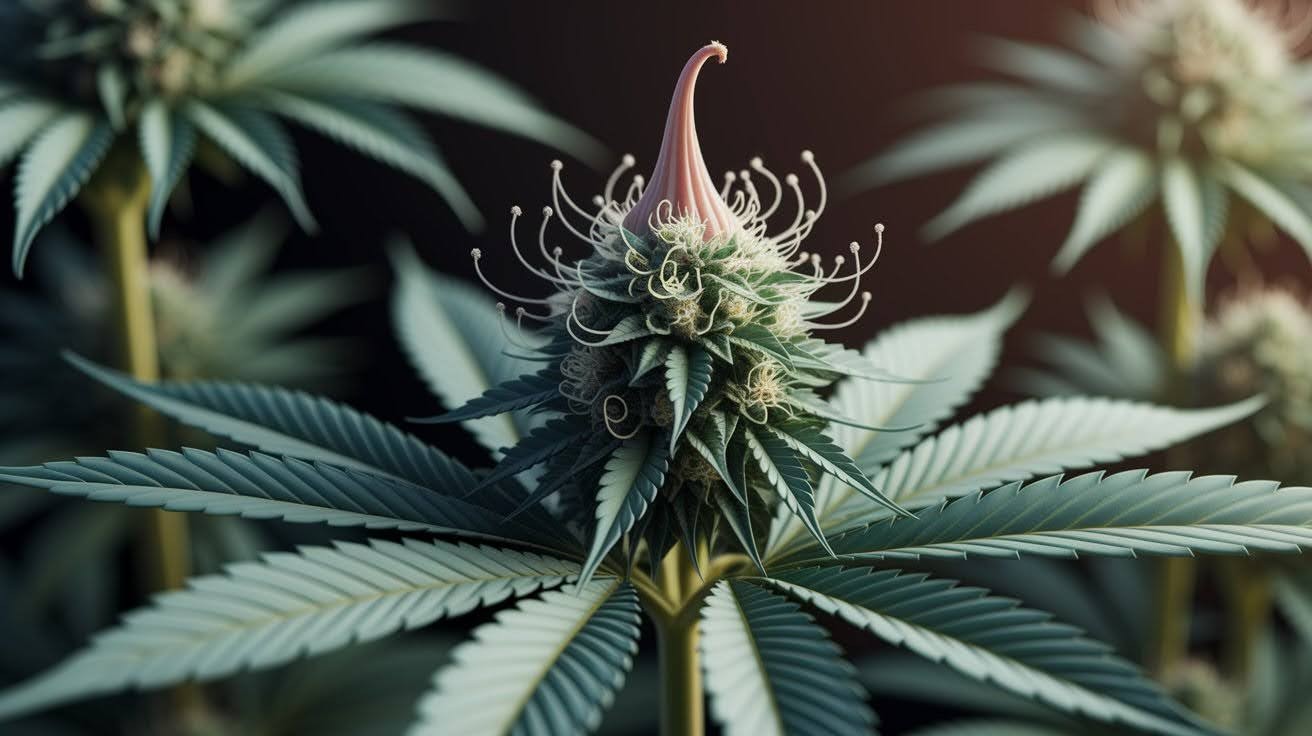
Female preflowers have distinct features once you know what to look for. I spent weeks learning these details. Now I can spot them instantly.
Female flowers look like tiny pears. They have an ovate shape with a longer, slender, pointed tip. Think of a teardrop turned upside down.
The shape is everything. Females are narrow and elongated compared to males. They have a fat bottom that tapers to a sharp point at the top.
The calyx is your main identifying feature. This pear-shaped structure holds the reproductive parts.
White, wispy hairs emerge from the calyx tip. These are called pistils. They look like tiny white threads reaching out from the pointed end.
You might see 1 or 2 pistils per preflower. But here’s the important part. Not all female flowers show pistils immediately.
Pistils are always white, never green.
4. Location and Positioning
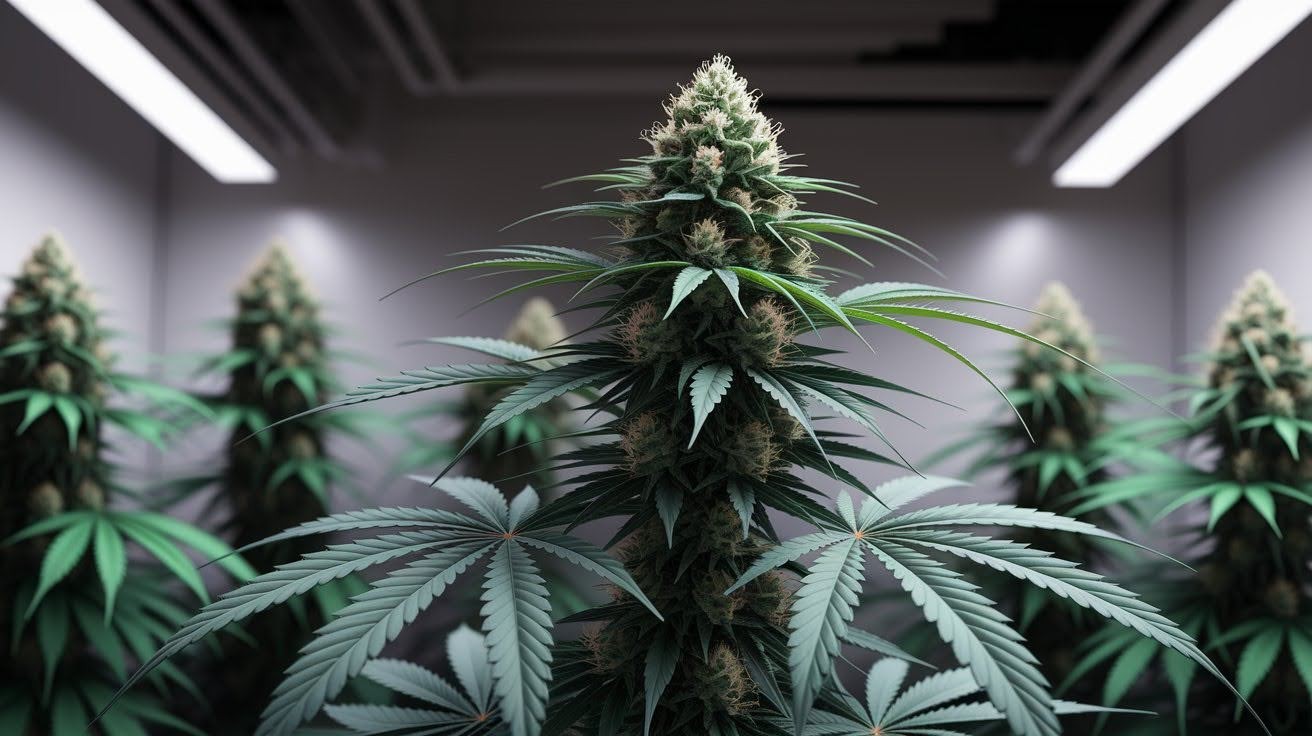
Knowing where to look saves you hours of searching. I used to check every inch of my plants randomly. Big mistake.
Start at the top of your plant. Preflowers almost always appear in the upper parts first. This is closer to your grow lights, where the plant gets the most energy.
Look for V-shaped junctions. These are spots where stems meet the main stalk. The preflowers hide right in these little corners.
I learned this tip from a grower with 20 years of experience. “Always check the V spots first,” he told me. He was right.
But here’s where it gets tricky. Sometimes, preflowers appear on random branches lower on the plant. Don’t assume they’ll only be at the top.
The pattern is usually consistent, though. You’ll find the first petals near the top of the plant. Then more will appear as you work your way down.
Check systematically from top to bottom. This method ensures you don’t miss any hidden preflowers in unexpected spots.
Distinguishing Female from Male Preflowers
Male flowers are round, spade-shaped, and bulky with a “ball on a stick” appearance, contrasting sharply with the narrow, pear-shaped female preflowers.
1. Male Preflower Characteristics (for comparison)
Understanding male preflowers helps you spot females faster. I always teach the differences side by side. Comparison makes identification clearer.
Malepollens look like tiny spades. Think of the spade suit from a deck of playing cards. They’re round and compact instead of long and narrow.
The shape is totally different from females. Males are squat with a bulbous bottom and just a slight tip. No refined pear shape here.
Here’s what happens as they develop. Male flowers start looking like a ball at the end of a stick. This “ball on a stick” appearance is a dead giveaway.
I’ve seen hundreds of male preflowers over the years. That rounded, compact shape never changes.
Males develop into something called sperm. These eventually become pollen sacs that look like tiny bunches of bananas.
The key difference is obvious once you see both. Females are narrow and pointed. Males are round and bulky.
Remember this simple rule. Pear shape means female. Spade shape means male.
2. Key Differentiating Features
Three main features separate males from females. I use these differences every time I sex plants. They work like a checklist.
Shape tells the whole story. Females are long, narrow, and pointed like tiny pears. Males are round, bulbous, and spade-like. Think refined versus chunky.
I remember the first time this clicked for me. The difference was so obvious once I knew what to look for.
Pistils are the female gametophytes. These white wispy hairs emerge from female preflowers. They look like tiny white threads reaching out.
Males never have pistils. Instead, they develop pollen sacs that look like little balls. No white hairs anywhere on male preflowers.
Timing matters too. Males typically show their preflowers 1 to 2 weeks earlier than females. This early development is helpful for identification.
Females take their time. They need longer to develop recognizable features. Don’t rush them or you might make mistakes.
Use all three features together. Shape, pistils, and timing give you a complete picture. One feature might be unclear, but three together confirm the sex.
Conclusion
Identifying very early female preflowers doesn’t have to be guesswork anymore. You now know the key signs: pear-shaped calyxes, white wispy pistils, and the right timing at 4 to 6 weeks from germination.
Your sexing problems are solved. Look for those V-shaped junctions near the top of your plants. Use a jeweler’s loupe for the best view. Remember that females are narrow and pointed, while males are round and bulky.
Start checking your plants with confidence. The techniques in this guide work whether you’re growing regular or feminized seeds.
Have questions about very early female preflowers? Drop a comment below. I read every single one and love helping fellow growers succeed.
Happy growing, and may all your preflowers be female!
Remember: This information is for legal home cultivation only.
Frequently Asked Questions
When do very early female preflowers first appear on cannabis plants?
Very early female flowers typically appear 4 to 6 weeks from germination. They show up at V-shaped junctions where stems meet the main stalk, usually starting near the top of the plant first.
What do very early female flowers look like?
Very early female flowers have a pear-shaped or teardrop appearance with a narrow, pointed tip. They may have 1-2 white wispy pistils emerging from the tip, though not all female preflowers show pistils immediately.
Where should I look for very early female preflowers on my plants?
Look at V-shaped junctions where stems meet the main stalk, especially in the upper parts of your plant, closer to the lights. Check systematically from top to bottom, as they may appear randomly on lower branches too.
Can I identify very early female flowers without pistils showing?
Yes, you can identify female flowers by their distinctive pear shape even without visible pistils. The long, narrow, pointed calyx structure is enough to confirm female sex before white hairs appear.
What tools help identify very early female preflowers accurately?
A jeweler’s loupe with 30x magnification is essential for seeing tiny preflowers clearly. Use proper lighting, preferably natural sunlight, to see true colors and structures. Avoid harsh phone flashlights that wash out details.










